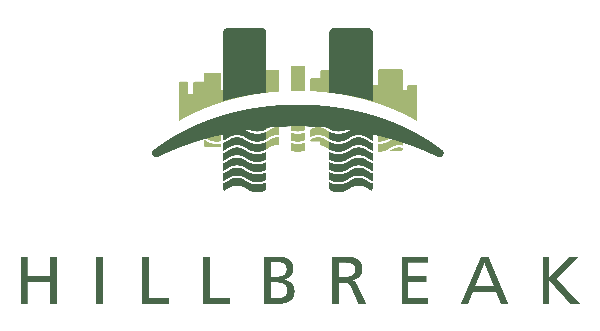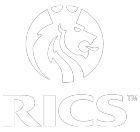Strategic Foresight: Stage 4 – Visioning a Preferred Future
Visioning a Preferred Future
The essential purpose of Strategic Foresight is to make better, and more informed decisions in the present. All organisations, however, need to ask the basic questions about their future: “Where are we going? What do we want to be? And how do we know what we want to be doing?” In achieving this, they not only need to identify all the implications of alternative futures; challenge the basic assumptions of their thinking and operation; but also “think big” about their aspirations ahead.
One of our favourite sayings at Hillbreak when conducting a Strategic Foresight Exercise and arriving at the ‘Visioning’ stage is: “Imagine ahead and plan backwards”. ‘Presencing’ is the professional term. This is the reverse of the conventional ‘trend extrapolation’ mindset of most planning practices, but we believe that creating a vision for the future is vital in helping identify long-term goals and strategies. Nevertheless, it should be recognised that a strategic vision is akin to a ‘lodestar’ in that it provides an image of the future that offers direction yet is never reached. In this way, visioning is also an iterative process, as the formulation of strategies and plans may raise issues and questions that make it wise to revise the vision and the consequent strategy over time.
A strategic vision serves organisations as a template, model, or interpretive framework for making sense of the daily puzzle; as well as providing a rallying point for focusing the organisation’s work. In tough times, moreover, it can provide reassurance that current challenges will pass and are worth navigating through. It also aligns the organisation and its stakeholders around a common purpose communicating expectations to all concerned. A great vision statement, however, does not guarantee great results. Unless everyone involved believes in the vision, and acts accordingly, it is simply words on paper.
Guiding Principles
The main advantages of creating a vision of an organisation’s preferred future is that it helps:
- look toward the horizon;
- consider the multi-faceted changes facing society, the sector, and the organisation;
- incorporate the entrepreneurial forces that it takes for organisations to succeed;
- develop a high-performance appraisal and incentive system;
- support continuous improvement; and,
- foster symbiotic relationships.
The following guiding principles should be considered when developing the preferred future vision during any workshop.
- Visualisation: in order to achieve a preferred future, it is important to be able to imagine it. Rushing towards a hazy ideal is wasteful of energy and resources, and, to that end, the visual conceptualisation of the future is vital.
- Communication: the realisation of future goals is only of value if all are willing to support and encourage their implementation. Effective communication of ideas between, and from, people and organisations is strategically crucial in creating the broadest base from which to achieve the preferred future. Involve ‘remarkable people’ throughout.
- Integration: a preferred future which is clearly exclusive and selective should not form the basis of the vision. Selectivity leads to the creation of a preferred future for some people, but not for all. Integration of people and ideas at this stage of the process is a key factor in determining the long-term success or failure of the work.
How to Envision a Preferred Future
Somewhat prosaically perhaps, the following procedure is illustrative of how to envision a preferred future in a workshop setting:
- The participants should seat themselves in a horseshoe or semi-circle arrangement in the main room.
- Every participant is asked by the facilitator to spend time thinking carefully about what aspects of a desired future they consider important. (It is imperative that everybody does this with respect to the issues fleshed out during the day, particularly the scenarios and their turning points).
- Approximately 2 to 3 aspects should be written down by each participant in a ‘statement-like’ format on cards or post-it notes.
- Each participant is then asked to read out their contribution to the rest of the group.
- The facilitator collects each of the cards or post-it notes and arranges or pins them onto a table or board at the centre of the room.
- A short discussion is then encouraged to consider each of the aspects proposed: similarities, differences, connections and new ideas.
- Once this discussion has taken place, the final aspects of the vision should be agreed by the participants and then compiled by the facilitator.
It is worth striking a note of caution regarding the very term “vision” in the context of an organisational setting, for the word itself can conjure up notions of ‘rapture’ rather than ‘reality’! Envisioning a preferred future is far more about perceptive and aspirational foresight than organisational yearning and wish fulfilment.
The Lasting Benefit
It has long been recognised that visionary corporations attain extraordinary long-term performance. Successive studies have found evidence that companies striving to learn and grow through futures-oriented thinking outlast companies focused solely on economic returns. A famed example by Royal Dutch/Shell found that the average life expectancy of Fortune 500 companies was under fifty years, but many were over two hundred years old. The key difference between the short- and long-lived companies was that the former focused on financial returns while the latter concentrated on the community of people comprising the organisation, maintaining a strong sense of identity and purpose through shared vision of a preferred future in good times as well as bad.
A concluding injunction for the visioning stage of the strategic foresight process is: “Dare to be the ridiculous!” The mindset should be close to Disney’s concept of: “the willing suspension of disbelief”; emphasising the presence of mind to consider even the most ‘off-the-wall’ alternative prospects, pathways and solutions, and searching for the kernel of a useful notions within them. Build, therefore, upon wild ideas and continue to ask the ‘What If?” questions.














